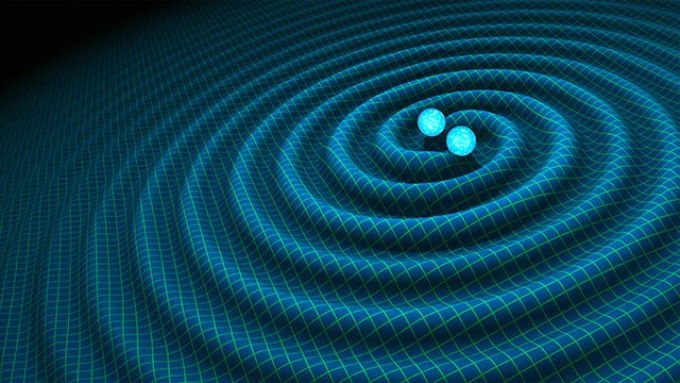May 21 2018
The significant first discovery of gravitational waves from colliding black holes far beyond Earth’s galaxy provided a new perspective to figuring out the universe. A series of detections—four more binary black holes and a pair of neutron stars—rapidly followed the September 14, 2015, observation.
 Visualization of the gravitational wave emission from a pair of orbiting compact objects. (Image credit: NASA)
Visualization of the gravitational wave emission from a pair of orbiting compact objects. (Image credit: NASA)
Presently, another detector is being constructed to crack this window wider open. This next-generation observatory, known as Laser Interferometer Space Antenna (LISA), is projected to be in space in 2034, and it will be responsive to gravitational waves of a lower frequency than those sensed by the Earth-bound Laser Interferometer Gravitational-Wave Observatory (LIGO).
A new Northwestern University study envisages that numerous binaries (pairs of orbiting compact objects) in the globular clusters of the Milky Way will be detectable by LISA. These binary sources would have all combinations of a neutron star, black hole, and white dwarf components. Binaries produced from these star-dense clusters will have many varied features from those binaries that created in isolation, far from other stars.
The research is the first to use rational globular cluster models to make comprehensive predictions of LISA sources. “LISA Sources in Milky-Way Globular Clusters” was published on May 11 by the journal Physical Review Letters.
“LISA is sensitive to Milky Way systems and will expand the breadth of the gravitational wave spectrum, allowing us to explore different types of objects that aren’t observable with LIGO,” said Kyle Kremer, the paper’s first author, a Ph.D. student in physics and astronomy in Northwestern’s Weinberg College of Arts and Sciences and a member of a computational astrophysics research collaboration based in Northwestern’s Center for Interdisciplinary Exploration and Research in Astrophysics (CIERA).
In the Milky Way, 150 globular clusters have been identified thus far. The Northwestern research team forecasts one out of every three clusters will form a LISA source. The research also forecasts that about eight black hole binaries will be detectable by LISA in earth’s neighboring galaxy of Andromeda and another 80 in adjacent Virgo.
Prior to the first detection of gravitational waves by LIGO, as the twin detectors were being constructed in the United States, astrophysicists worldwide worked for years on theoretical predictions of what astrophysical phenomena LIGO would monitor. That is what the Northwestern theoretical astrophysicists are doing in this latest study, but this time for LISA, which is being constructed by the European Space Agency with contributions from NASA.
We do our computer simulations and analysis at the same time our colleagues are bending metal and building spaceships so that when LISA finally flies, we’re all ready at the same time. This study is helping us understand what science is going to be contained in the LISA data.
Shane L. Larson, Associate Director of CIERA & Study Author
A globular cluster can be defined as a spherical formation of hundreds of thousands to millions of stars, gravitationally bound together. The clusters are few of the oldest populations of stars in the galaxy and are capable factories of compact object binaries.
The Northwestern research team had several advantages in conducting this exploration. Over the past twenty years, Frederic A. Rasio and his group have developed a robust computational tool—one of the most efficient in the world—to practically model globular clusters. Rasio, the Joseph Cummings Professor in Northwestern’s department of physics and astronomy, is the study’s senior author.
The team used over a hundred completely evolved globular cluster models with properties resembling those of the observed globular clusters in the Milky Way. The models, which were all developed at CIERA, were run on Quest, Northwestern’s supercomputer cluster. This robust resource can evolve the complete 12 billion years of a globular cluster’s life in a span of days.
The research was supported by NASA (ATP grant NNX14AP92G) and the National Science Foundation (grant AST-1716762).
The paper’s other authors include Sourav Chatterjee and Katelyn Breivik, both of Northwestern and CIERA, and Carl L. Rodriguez, of the MIT-Kavli Institute for Astrophysics and Space Research.